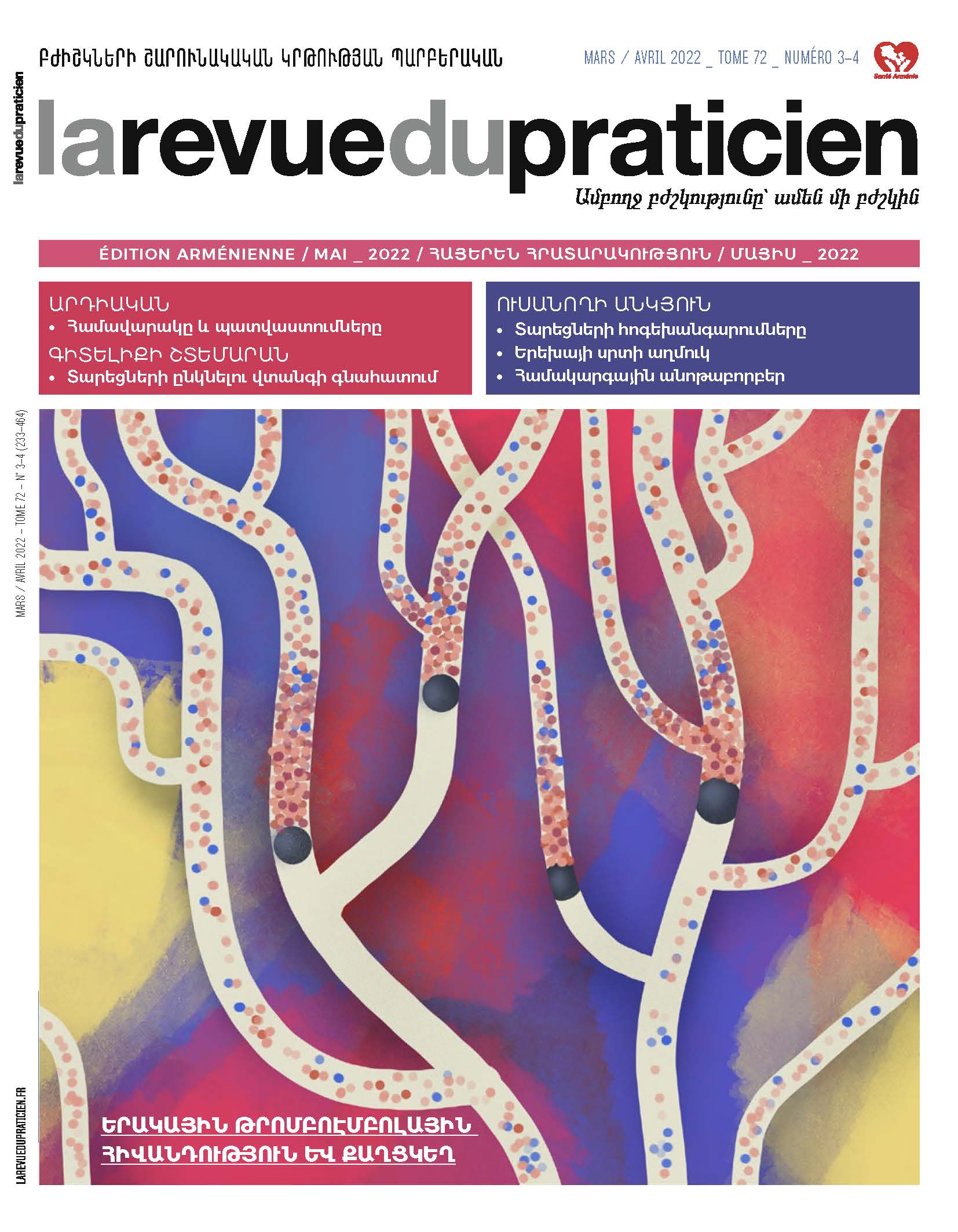Ե ՞րբ և ինչպե՞ս քաղցկեղ որոնել երակային թրոմբոէմբոլային հիվանդության դեպքում 14
Marie-Antoinette Sevestre.Ամփոփագիր
Թրոմբոզի և քաղցկեղի փոխկապակցվածությունը վաղուց է հայտնի և ախտորոշման ու բուժման առանձնահատուկ հիմնախնդիրներ է առաջադրում։ Երակային թրոմբոէմբոլային հիվանդությունը (ԵԹէՀ) կարող է նախորդել քաղցկեղին և նախազգուշացնող նշան լինել։ Բազմաթիվ հրապարակումներ տեղեկացնում են չհրահրված ԵԹԷՀ-ի դեպքում թաքնված քաղցկեղի 5-10 % հաճախականության մասին։ Քաղցկեղների մեծ մասն ի հայտ է գալիս ԵԹԷՀ-ի ախտորոշումից հետո մեկ տարվա ընթացքում։ Թրոմբոզի ախտորոշման պահին քաղցկեղի սքրինինգը ենթակլինիկական փուլում հնարավորություն է տալիս նվազեցնելու դրա տարածման վտանգը և բարելավելու կանխատեսումը։ Այդ պատճառով հարկավոր է քաղցկեղի սովորական որոնում, որը ներառում է հիվանդների հարցուփորձ, կլինիկական հետազոտություն և նվազագույն կենսաբանական գնահատում՝ առանց ավելորդ լրացուցիչ հետազոտությունների ու հաշվի առնելով վտանգի գործոնները։ Ներկայումս հետաքրքրող հարցը հետևյալն է՝ արդյո՞ք ավելի ընդլայնված ռազմավարությունը՝ ՊԱՇ-ի ներառմամբ, հատկապես՝ 50 տարեկանից բարձր հիվանդների շրջանում, կլինիկորեն արդյունավետ է։
